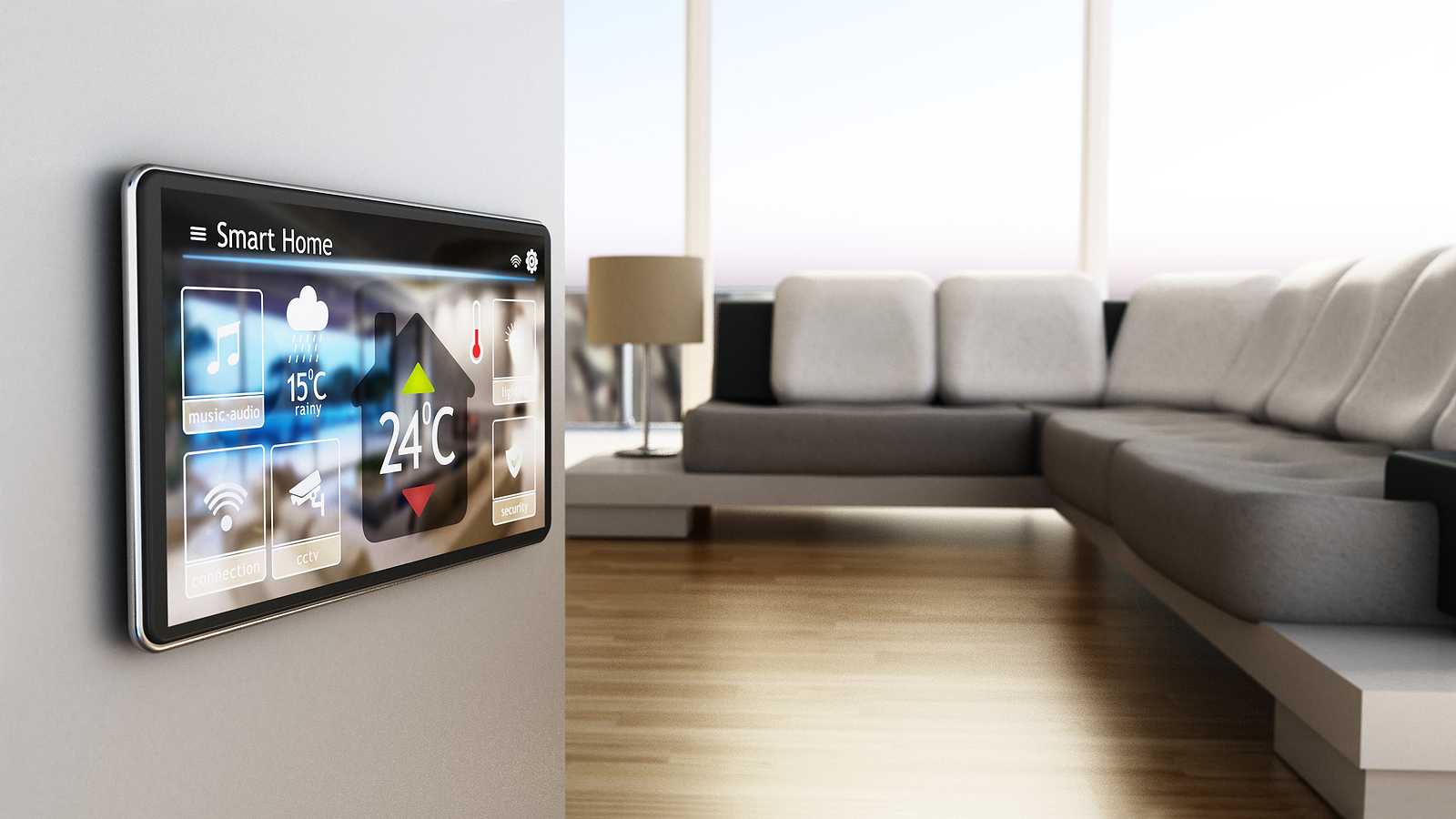
Smart Home Technology: Is It Worth the Investment and Will It Save You Money?
There is a lot being said about smart home technology these days, but is it just the latest buzzword, or will it really save you money?
Smart technology for the home can encompass a wide variety of gadgets, from smart appliances to smart home hubs like Amazon Alexa. In the HVAC world, smart thermostats have become increasingly popular among homeowners trying to keep their homes comfortable while conserving energy and saving money.
Here’s the lowdown on smart thermostats and how they could help you save money on your heating and cooling costs.
Traditional, Programmable, and Smart Thermostats: What’s the Difference?
First things first, let’s distinguish between the different types of thermostats available.
A traditional, or “old-school” thermostat is a very simple device on the wall that allows you to manually control the temperature in your home by turning a dial. If you live in an older home or apartment, you might have this type of thermostat. A traditional thermostat is the least expensive option available.
A programmable thermostat is a digital device that allows you to program a temperature schedule for your home — i.e., you can set it to turn the heat or air conditioning up or down at specific times throughout the day.
Programmable thermostats are middle of the road as far as pricing goes. They’re more expensive than traditional ones, but still more affordable than smart thermostats.
A smart thermostat lets you control even more than a programmable thermostat does through high-tech features like Wi-Fi connectivity, self-monitoring, predictive controls, and more. Plus, you can control a smart thermostat from either a digital wall panel or a smartphone app, so you can adjust your home’s climate wherever you are.
A bigger investment than a traditional or programmable thermostat, smart thermostats can cost anywhere from $100-$500 or more, depending on the brand, model, and features.
How Does a Smart Thermostat Save Energy?
Smart thermostats have the potential to provide significant energy savings — in many cases, enough to recoup their cost within a year or two. Here’s how they do that.
It Can Tell If You’re Home or Not
This may sound like the beginning of a horror movie, but rest assured, there’s no evil villain at work here.
One of the ways a smart thermostat reduces energy consumption is by tracking your location via your smartphone and adjusting your home’s temperature accordingly.
For instance, when you leave for work in the morning and reach a certain distance from home, your smart thermostat will read your location and automatically turn down the heat or A/C to save energy. Then, when you’re on your way home and come within a certain distance of your house, the thermostat will turn up the heat or A/C again.
This way, you save energy on heating and cooling costs while maintaining a comfortable temperature in your home…all without you having to lift a finger.
With Self-Programming Features, It Can Learn Your Preferences
With a smart thermostat, you don’t have to spend time programming an exhaustive custom schedule (unless you want to). The device can learn your habits and preferences and create a schedule accordingly.
It can take a couple of weeks or so for the device to learn your habits. In that time, you can simply adjust the temperature from your smartphone app or wall panel to help it learn what temperature you like at what time of day.
Eventually, it will make those changes automatically.
It Monitors Your Energy Consumption
A smart thermostat will also track your usage patterns to show you how much energy you’re using as well as a comparison between your set temperatures, actual room temperatures, and outside temperatures.
Some of them will even compare your usage with that of the average home in your area and/or offer suggestions for reducing your energy consumption. They can even remind you to change your HVAC filter!
The reporting smart thermostats offer can help you notice patterns and find ways to use energy more efficiently. It can also help you notice when the efficiency of your HVAC system has changed.
For example, if you notice that your furnace has been running at full power, yet has been unable to keep your home at the set temperature, that could be a sign that you’re due for some HVAC maintenance.
How To Get the Most Savings With Your Smart Thermostat
If you’re already fairly meticulous about conserving energy in your home, you won’t notice a drastic difference in energy savings when you install a smart thermostat (at least, not at first). But if you haven’t been as stringent, you’ll likely notice a big difference right off the bat.
Here are a few tips to get the most energy savings out of your smart thermostat.
Installation: Choose the Right Location for Your Smart Thermostat
Whether you install it yourself or have a professional do it for you, it’s important to ensure your thermostat is installed in the right location in your home.
As with any thermostat, if your smart thermostat isn’t installed in the right spot in your home, it won’t give you accurate temperature readings. When you install your thermostat, make sure it is:
- In a central location
- Away from sources of heat or cold, including fireplaces, windows, and refrigerators
- Out of direct sunlight
Set Your Ideal Temperature Range
Tell your smart thermostat what temperature range you want to maintain in your home and what you want it to do when temperatures are above or below that range. Then, sit back and let it do its thing.
Once your thermostat knows your ideal temperature range, it will maintain temperatures within that range without further intervention from you.
Set Up Scheduling Features Efficiently
Next, make sure you adjust your temperature settings according to the time of day to ensure the most efficient use of your heating and cooling systems. You can either do this manually until your smart thermostat learns your habits, or program your desired schedule right after installation.
For the most efficient heating and cooling, Energy Star recommends that you do the following:
- During the heating season, reduce your heating temperature by 8 degrees when your home is unoccupied or when you are asleep.
- During the cooling season, increase your air conditioning temperature setting by 7 degrees when you’re away from home and by 4 degrees when you’re sleeping.
Utilize Energy Zones
If your HVAC system has zones, you will need a separate smart thermostat for each zone. This allows you to cool or heat different parts of your home differently, according to your needs. In this way, zones increase your energy savings.
While the initial cost of purchasing multiple smart thermostats may be high, in the end you will save more by taking advantage of energy zones.
Customize Automation Rules Further With a Smart Home Hub
If you have a smart home hub like Amazon Alexa or Google Assistant, you can program your smart thermostat to work in sync with other smart devices in your home.
For example, when paired with a smart fan, you can use the fan to help maintain the right temperature and save money on heating and cooling costs. Even better, you can use your smart home hub to create an automation rule so this happens automatically.
Look for Energy Savings Programs and Rebates
Many cities, states, and energy utility companies offer energy savings programs, discounts, and/or rebates for homeowners using smart home technology. Check with your utility provider and do an online search for perks available for smart thermostat users in your area.
Titan Heating and Cooling is your local HVAC expert. Contact us for HVAC maintenance, air duct cleaning, and other services that will help you keep your home comfortable while conserving energy and saving money.


